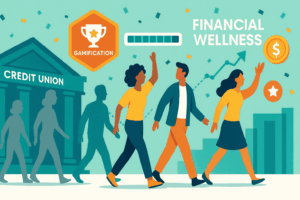Savings Challenges make saving money more fun and increase the likelihood you will achieve your savings goal. There are many ways to gamify savings and different types of savings challenges you can participate in. This ultimate savings challenges guide will teach you all about the power of savings challenges, determine which challenge is right for you, and how to get started.
If you are interested in learning more about financial gamification in general check out Ostrich’s ultimate financial gamification guide.
Why Use a Savings Challenge?
Saving money provides a strong financial foundation for you to build the life of your dreams. Having savings will reduce your stress and anxiety around money. Knowing that in the event of an emergency, unexpected expense, or change in income, you’ll be okay.
Yet, saving money isn’t always easy. That is why savings challenges are helpful in jump-starting your savings and enabling you to reach your goals more quickly. Additionally, savings challenges make the act of saving that is typically not exciting more fun and engaging.
If you struggle to save money consistently or simply want to achieve your goals faster then savings challenges may be the answer to your woes.
What Exactly Are Savings Challenges?
Savings challenges are game-like challenges that last a set period of time, have a regular check-in, and have a specified goal. Savings challenges can be done by individuals, couples, or even groups of people. Research from the American Society of Training has shown that combining a regular progress check-in with an accountability partner increases your likelihood of achieving a goal by 95%. Ostrich’s savings challenges lean into this finding by making it easy to find and invite others with similar goals to be your accountability partner in savings challenges.
Types of Savings Challenges
The key characteristics to pay attention to when identifying the right savings challenge for you are the length of the challenge, the frequency of the check-in, and the goal.
Length of the challenge
How long will the savings challenge last? It’s important to set an end date. Even if you intend to continue the savings challenge into the future, the end date helps you stick to the goal in the short term. At the end of the savings challenge, you can always start again or update your savings goal. Common challenge lengths include:
- 1 year savings challenges; examples include The Penny Challenge & 52 Week Money.
- 6 month savings challenges; an example is Our Love is Priceless.
- 3 month saving challenges; an example is Acquire Then Retire.
Frequency of the check-ins
The second factor to consider is how frequently you wish to check in for your savings challenge. It’s important to keep your goals top of mind, but you also have to be realistic in your ability to save on a regular basis. For example, The Penny Challenge is a daily savings challenge that starts with a single penny on the first day and increases by one penny each day after. For a daily saving challenge, the frequency makes sense for a small amount each day.
Whereas a larger savings goal like Our Love is Priceless where you are saving toward a wedding and honeymoon, is likely better with a larger amount saved at a less frequent check in interval.
Common savings challenge check in frequencies are:
- Daily Savings Challenges, such as The Penny Challenge.
- Weekly Savings Challenges, such as 52 Week Money.
- Monthly Savings Challenges, such as Our Love is Priceless and Acquire Then Retire.
Goal setting
The third major part of a savings challenge is the goal. What is that you want to accomplish? It could simply be getting started on saving in general, saving a specific amount of money, or saving for a specific expense.
Example goals include:
- Building a savings habit
- Saving for a house
- Building an emergency fund.
- Putting more money towards retirement
Who Should Use Savings Challenges?
Savings challenges are great for anyone struggling to save money, finds saving money boring, has important financial goals, or wants to help others achieve their savings goal. Because savings challenges can be done with others, a group savings challenge is a great way to get your partner, family, and friends who may not like thinking about money to start taking positive financial actions.
Implementing Your Savings Challenge
Savings challenges can be done the old-fashioned way on pen and paper, in group chats, or using Ostrich’s mobile app.
Ostrich’s app has built-in reminders, rewards, and tracking to make it as easy as possible to get started and stick to a savings challenge. Additionally, it’s easy to invite others to join you in group challenges and keep your dollar amounts private to you so you can participate with others who have different savings goals from you.
We recommend using whatever tool works best for you.
Tips for saving more money
Here are some money-saving tips to help you during a savings challenge!
Pay yourself first!
Whether you have a defined budget or not, the key to hitting your savings targets is to pay yourself first. Immediately, when you get income, set aside money towards your savings goal. If you don’t pay yourself first, no one else will.
Sell your old things.
You probably have some things you either bought and never used or only lightly used. Whether it’s that new outfit that looked great online but not so much in person, or old electronics you don’t use anymore. Hop on Facebook Marketplace, eBay or Amazon and list those suckers.
Cut out expenses.
This is one of the simplest ways to increase your savings but it isn’t always easy. Find unused subscriptions to cancel or things you can live without. To make the biggest impact, try cutting back on larger expenses such as cheaper rent or lower transportation costs. You can join a no spending challenge on Ostrich if you want to join others who are also cutting back on spending.
What to do with your newfound savings
Paydown debt.
Debt drains both your bank account and you, psychologically. Pay off high-interest rate credit card debt, payday loans, or other forms of revolving debt. Join a debt paydown challenge and try implementing one of the snowball or avalanche debt paydown methods to stay motivated.
Build your emergency fund.
It’s important to have at least a few months’ worth (6 months is considered healthy) of living expenses built up. This provides a cushion for your quality of life in case you lose your income. If you feel like 6 months isn’t enough try building your savings to the level of your annual salary or until you feel comfortable.
Invest for the long-term!
Another great use of your new savings is to invest. Research shows that investing for the long-term (10+ years) is the way to go. We recommend getting started with low-cost index funds vs. purchasing individual stocks and using the dollar cost average investing method. Check out our favorite brokerage accounts and our favorite auto investing tools.
Make an important purchase.
Once you’ve built up your emergency fund and started investing, use that extra money to make an important purchase. Don’t just spend the money for the sake of it – look for things that truly bring you fulfillment.
Take a small calculated bet.
Investing for the long-term is proven to be the most sure-fire and safe way to build wealth, but it is boring. Boring is good for your major goals. We like boring! But if you have a little extra money after making your boring investments and you are okay with losing a small amount of money, explore alternative moonshot investments. This could be anything from investing in cryptocurrency, NFTs, startups, art, collectibles, or that penny stock. The key is not to make this your main strategy. Never invest more than you can afford to lose not just financially, but also psychologically.
Benefits of Participating in Savings Challenges
There are many benefits from completing a savings Challenge. Who doesn’t want more money in their pockets?
Building your saving muscle.
Saving money isn’t always easy. It can be tough with the constant ads, one-click purchasing, and temptations to spend everywhere you look. By consistently saving week over week, you’ll start to see that it is possible to save money without sacrificing your quality of life.
Upping your challenge.
After completing your first savings challenge you’ll be motivated to see how much more you can save. You’ll be primed to start saving even more of your hard-earned money.
Feel good.
Hitting your goals releases dopamine to your brain, giving you that feel-good high. You’ll legitimately feel accomplished for achieving your savings goal and your brain will want more. Ultimately the desire to feel that way again will motivate you to save more and take on larger financial goals.
Tools to Save Money Faster
High-Yield Savings Account
Open up a separate high-yield savings account in order to earn the most interest on your savings. See the tools page for the best high-yield accounts today.
Automate Your Savings
Log into your checking account and create an automatic weekly transfer to your new savings challenge account. This will make your life a lot easier, and you can always adjust your automated transfers whenever you’d like.
Savings challenges to explore include: Our Love is Priceless, The Penny Challenge, Acquire Then Retire, 52 Week Money, and Drop It Like It’s Hot.
Conclusion
Savings challenges make saving money fun, simple, and keep you accountable to your goals. There are different types of savings challenges that can be customized to meet your financial goals. When you participate in savings challenges with others you increase your chance of success and feel good sharing your wins with others. Using Ostrich, you can find the perfect savings challenge for you and even invite your friends to join you. Download Ostrich to get started on your first savings challenge today!














